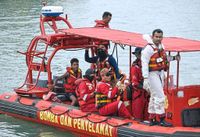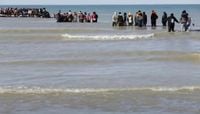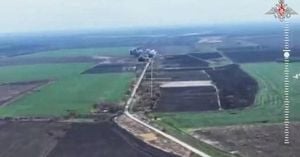As dawn broke on November 7, 2025, off the coast of Langkawi Island in Malaysia, the turbulent Andaman Sea claimed yet another tragic chapter in the ongoing refugee crisis. A boat carrying Rohingya refugees and other migrants capsized in rough waters, leaving at least 28 dead and 14 survivors rescued, according to The Straits Times. The tragedy has reignited fears of renewed, desperate voyages across Southeast Asia’s dangerous maritime routes, as worsening conditions on land push more families to risk everything for a chance at safety.
Just days later, in a separate incident thousands of miles away, a wooden skiff believed to be ferrying migrants toward the United States capsized in stormy seas near San Diego, California. The U.S. Coast Guard reported at least four deaths and four hospitalizations after the vessel was discovered in the surf off Imperial Beach late on November 15, 2025. The U.S. Border Patrol found six people on the beach just before midnight—one pronounced dead at the scene, another rescued from beneath the overturned boat. Two hours later, three more bodies were recovered from the ocean near Imperial Beach Pier. The search for additional survivors continued into the next day, with several of those rescued claiming Mexican nationality while others remained unidentified. One individual was turned over to the Department of Homeland Security, according to the Coast Guard’s statement on November 16.
These recent disasters are not isolated events. They are symptoms of a wider regional and global crisis, where conflict, persecution, and economic desperation drive people to attempt perilous journeys—often at the mercy of human traffickers and smugglers. In the case of the Langkawi tragedy, Malaysian authorities have launched a sweeping investigation, working with Interpol and Aseanapol to track down a syndicate believed to be orchestrating these deadly crossings. Kedah police chief Datuk Adzli Abu Shah told reporters that the syndicate’s operations extend across Malaysia and several neighboring countries, gathering migrants from as far as the Bangladesh-Myanmar border.
“The D3 Division (of the Anti-Trafficking in Persons and Smuggling of Migrants – ATIPSOM) under the Bukit Aman Criminal Investigations Department is collaborating with Interpol and the ASEAN police,” Adzli explained during a press conference. “We will track down the syndicate and provide any details obtained…we will monitor the progress.”
Survivors of the Langkawi incident described a chilling modus operandi: migrants were assembled at five locations between Baitadung and Teknaf, near the Bangladesh-Myanmar border, and loaded onto a vessel operated by the syndicate. The boat would anchor in a channel between countries and only set sail once filled to maximum capacity—about 300 people—making the treacherous journey that could last up to two weeks. Payment for passage, survivors said, was arranged by family members and only made upon arrival in Malaysia. Police recovered handwritten notes from survivors, containing phone numbers believed to be linked to syndicate agents. Interrogation of the 14 survivors confirmed they were migrants, not syndicate members, and that five individuals believed to be part of the syndicate had operated the mothership before transferring the migrants to smaller boats near the Malaysia-Thailand border.
The scale of the disaster is sobering. Twenty-nine bodies have been recovered since the boat carrying more than 70 migrants capsized off Langkawi on November 6, 2025, as reported by Free Malaysia Today. Fourteen people were found alive, but many more remain missing, their fates uncertain amid the churning waves and shifting tides.
These tragedies are the latest in a series of maritime disasters that underscore the region’s deepening humanitarian crisis. The Straits Times reports that, in 2025 alone, 217 Rohingya and other Myanmar nationals have reached Langkawi Island—a sharp increase from just 11 landings in 2023. The spike in arrivals is a direct result of deteriorating conditions in both Myanmar and Bangladesh. In Myanmar’s Rakhine State, renewed fighting between the Arakan Army and junta forces has displaced thousands and cut off entire communities from aid. A United Nations report released in September 2025 found the region “nowhere near ready” for safe returns, citing air strikes, blockades, and forced conscription.
Across the border in Bangladesh, more than a million Rohingya refugees live in sprawling, overcrowded camps. Shrinking international funding has forced the UN to slash monthly food rations from US$12.50 to just US$6 per person, fueling fears of rising hunger and further desperation. “People take these journeys because they see no other way out,” said Nur Sadek, executive director of the Rohingya Rights Response and a refugee himself. “Conditions in the camps must improve, and refugees need more freedom of movement.”
Rights groups warn that, without regional coordination and humanitarian corridors, more tragedies are inevitable. Chris Lewa, director of the Arakan Project, noted that at least 16 boats have left the region since September—13 from Bangladesh and three from Myanmar—well before the typical sailing season. “It is highly unusual to record so many departures this early,” Lewa told The Straits Times. She warned that worsening weather and pushbacks by coastal states could lead to even more casualties. “These vessels are unseaworthy, and without regional coordination, tragedies like Langkawi will keep happening.”
Malaysia, while hosting about 200,000 registered refugees and asylum seekers as of May 2025 (nearly 180,000 from Myanmar), is not a signatory to the 1951 Refugee Convention and does not formally recognize refugees. As a result, even those registered with the UNHCR are treated as undocumented migrants, facing restrictions on work, education, and healthcare. Lilianne Fan, co-founder of the Malaysian Advisory Group on Myanmar, emphasized the need for humane, coordinated responses. She called for “safe disembarkation procedures, national refugee protection systems and respect for non-refoulement,” urging Asean to step up its efforts.
The Malaysian government, meanwhile, is focusing its efforts on rescuing survivors and prosecuting those responsible for organizing the deadly voyage. “An investigation is under way to identify and take firm action against those responsible for organising this dangerous and illegal voyage. Those exploiting vulnerable people for profit will be held fully accountable,” said Home Minister Datuk Seri Saifuddin Nasution Ismail, as quoted by The Straits Times.
Globally, the plight of refugees and migrants is compounded by shrinking resettlement options. The United States, once a leader in refugee admissions, has sharply reduced its resettlement ceiling to 7,500 for 2026 and suspended the broader program pending review—a move rights groups say marks one of the most restrictive U.S. stances in decades. In Europe, countries like Germany have temporarily halted UN resettlement programs amid internal policy debates over migration, further narrowing the escape routes for those fleeing persecution and violence.
As the world grapples with record levels of displacement, the stories unfolding off the coasts of Malaysia and the United States serve as stark reminders of the human cost of inaction. Without urgent international cooperation and a renewed commitment to protecting those most at risk, the waves will continue to bear silent witness to tragedies that are as preventable as they are heartbreaking.





